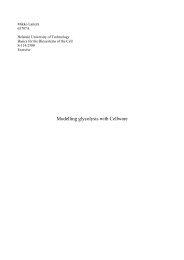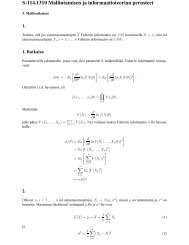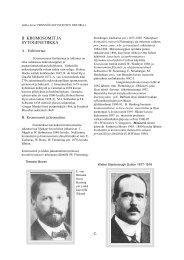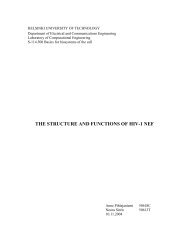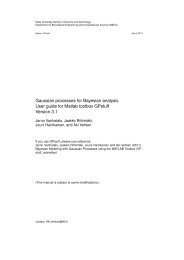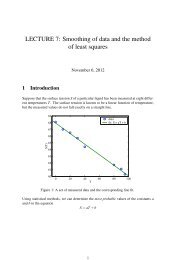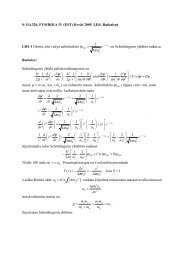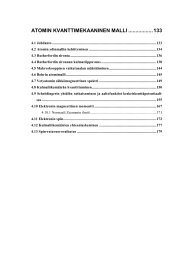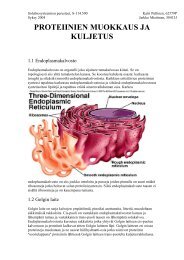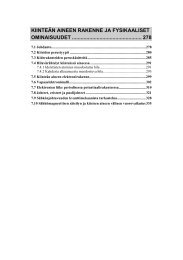LECTURE 3: Polynomial interpolation and numerical differentiation
LECTURE 3: Polynomial interpolation and numerical differentiation
LECTURE 3: Polynomial interpolation and numerical differentiation
You also want an ePaper? Increase the reach of your titles
YUMPU automatically turns print PDFs into web optimized ePapers that Google loves.
Using the values shown in bold text in the divided differences table, we can now write out<br />
the Newton form of the interpolating polynomial. We get<br />
{<br />
}<br />
i−1<br />
p n (x)= f[x 0 ,x 1 ,...,x i ] (x−x j )<br />
n<br />
∑<br />
i=0<br />
∏<br />
j=0<br />
= f[x 0 ]+ f[x 0 ,x 1 ](x−x 0 )+ f[x 0 ,x 1 ,x 2 ](x−x 0 )(x−x 1 )<br />
+ f[x 0 ,x 1 ,x 2 ,x 3 ](x−x 0 )(x−x 1 )(x−x 2 )<br />
= 3+ 1 2 (x−1)+ 1 3 (x−1)(x− 3 2 )−2(x−1)(x− 3 2 )x<br />
2.8 Algorithms<br />
We now use the same procedure to construct an algorithm which computes all the divided<br />
differences a i j ≡ f[x i ,x i+1 ,...,x j ].<br />
Notice that there is no need to store all the values in the table since only f[x 0 ], f[x 0 ,x 1 ],..., f[x 0 ,x 1 ,...,x n ]<br />
are needed to construct the Newton form of the interpolating polynomial.<br />
Denote a i ≡ f[x 0 ,x 1 ,...,x i ]. Using this notation, the Newton form is given by<br />
p n (x)=<br />
n i−1<br />
∑ a i ∏<br />
i=0 j=0<br />
(x−x j )<br />
We can use a one-dimensional array (a i ) 0:n for storing the divided differences <strong>and</strong> overwrite<br />
the entries each time from the last storage location backward. At each step, the new<br />
value of each new divided difference is obtained using the recursion formula:<br />
a i ←(a i − a i−1 )/(x i − x i− j )<br />
where j is the index of the step in question (j=1,. . . ,n).




